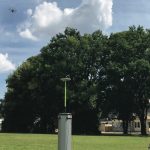A More Robust, Available, Trustable PNT Solution Among the Keys Addressed in Munich
All the heavy-hitters showed up in late March for the 2019 Munich Satellite Navigation Summit, from the U.S. government’s GPS crew to BeiDou, GLONASS and Galileo, flanked by up-and-coming regional players, including Japan, India and new kid on the block Korea.
By Peter Gutierrez













